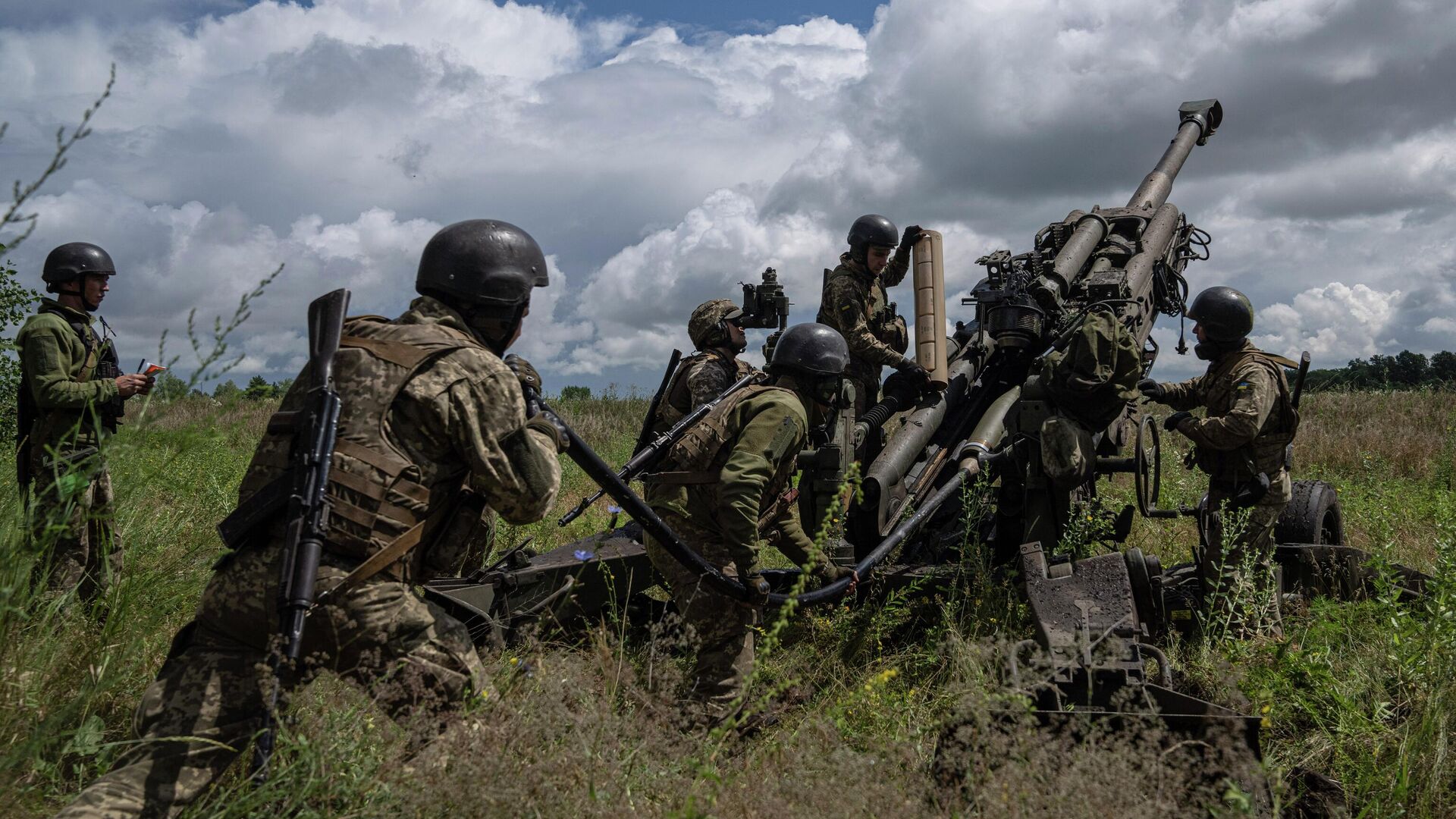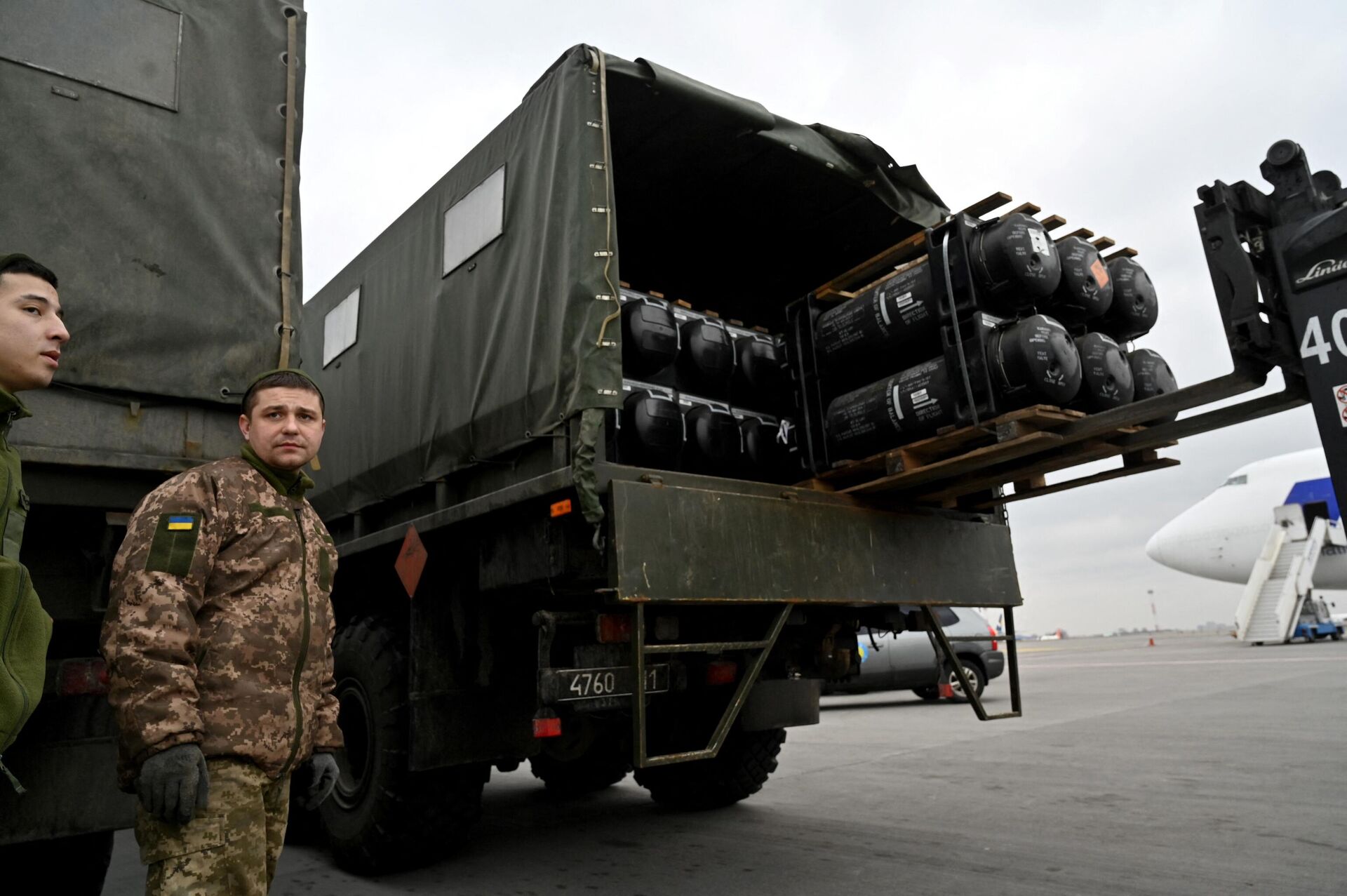https://sputnikglobe.com/20221127/nato-running-low-on-weapons-for-ukraine-as-20-of-its-members-pretty-tapped-out-1104741349.html
NATO ‘Running Low’ on Weapons for Ukraine as 20 of its Members Are ‘Pretty Tapped Out’
NATO ‘Running Low’ on Weapons for Ukraine as 20 of its Members Are ‘Pretty Tapped Out’
Sputnik International
The US and its NATO allies are struggling to assemble enough weapons to arm the Kiev regime as their own stockpiles are being depleted.
2022-11-27T06:27+0000
2022-11-27T06:27+0000
2022-11-27T08:54+0000
world
nato
ukraine
russia
howitzers
javelin
jens stoltenberg
https://cdn1.img.sputnikglobe.com/img/07e6/09/0f/1100803632_0:171:3072:1899_1920x0_80_0_0_c4c2560ead101d8613d02097d0edb189.jpg
The US and its NATO allies are finding it increasingly difficult to assemble enough weapons to arm the Kiev regime while topping up their own diminishing stockpiles, according to sources cited by a US media report.The alliance of western countries intent on continuing to funnel military and financial assistance to Ukraine is beginning to run low on weapons for this purpose. As Washington and its NATO allies persist in fanning the flames of the Ukraine conflagration, this dogged policy is increasingly devouring the modest stockpiles of artillery, ammunition and air defenses of some of Europe’s more modest armies. Thus, smaller member-states of the North Atlantic Treaty Organization have already exhausted their potential, and 20 of the alliance’s 30 members are at present “pretty tapped out”, a NATO official was cited as saying.The remaining 10, including Germany, France, Italy and the Netherlands are allegedly still in a position to provide more military assistance for Ukraine.Resupply & Maintenance ChallengesThere are a myriad problems facing the western coalition providing weapons support for Ukraine. Washington, albeit the self-appointed ringleader of this “assistance”, has but limited stocks of the kind of weapons the Ukrainians need, the media report said. Loath to divert critical weapons from regions such as Taiwan and Korea, and as stockpiles of costly air-defense missiles and anti-tank Javelins sent to Ukraine fade, the US has reportedly been scrambling to find Soviet-era equipment and ammunition for Ukraine.This refers to S-300 air defense missiles, T-72 tanks and Soviet-caliber artillery shells. The problem with shells is becoming particularly pressing as the Ukrainian side is using a staggering amount of ammunition, according to cited NATO officials. Recalling how many artillery rounds were fired daily by NATO forces in Afghanistan, for example, Camille Grand, a defense expert at the European Council on Foreign Relations, was cited as saying that, “a day in Ukraine is a month or more in Afghanistan”.The United States produces only 15,000 artillery rounds each month, stated the sources, pointing out that western defense industries were being warned to get set for much longer-term contracts. Furthermore, there is ostensibly chatter about employing more shifts of workers and sprucing up older factory lines. Ammunition purchases from countries such as South Korea are also allegedly being looked at to “backfill” stocks hollowed out because of the Ukraine conflict.NATO is even believed to be mulling investing in some old factories located in Slovakia, Bulgaria and the Czech Republic to launch the production of Soviet-caliber 152mm and 122mm shells for Ukraine, as the latter still relies to a great degree on artillery armory dating back to the Soviet-era. Furthermore, NATO countries have delivered advanced western artillery to Ukraine that utilizes the alliance’s standard 155mm shells. But as other NATO countries frequently make the shells differently, these systems are often incompatible.The US stockpiles of 155mm artillery rounds had purportedly been dwindling as of September, with the numbers of guided rockets, rocket launchers, howitzers, Javelins and Stingers also limited.An earlier report had stated that maintenance of the armaments was becoming a problem as no less than a third of the estimated 350 western-made howitzers supplied to Kiev were out of action at a given moment because of wear and tear.Export controls were another hurdle, the report highlighted, as some of the countries have legal restrictions on selling guns and ammunition to a country intending to deliver them to another one which is engaged in a conflict.Describing the plethora of diverse systems that the western countries have been channeling into Ukraine, one alliance official wryly called it “NATO’s petting zoo”, in reference to the animal names used for weapons, such as the German Gepard ('Cheetah') 35mm self-propelled anti-aircraft gun mechanism, or the French Crotale (‘Rattlesnake’) air defense system. The “mixed bag”, as the source put it, makes both resupply and maintenance a challenging business. The alliance has failed to work on creating weapons that could be used interchangeably by NATO countries, added insiders.Overall, NATO countries have provided an estimated $40Bln of weaponry to Ukraine, the report added, almost equal to France’s entire annual defense budget, for example. Incidentally, Paris is cited as being reluctant to provide more to Ukraine after giving it about 20 percent of all its existing artillery in the form of 18 modern Caesar howitzers.And yet, NATO’s secretary-general, Jens Stoltenberg, has been openly haranguing reluctant alliance members, reminding them that despite the bloc’s guidelines requiring members to maintain stockpiles, their depletion is no excuse to limit arms exports to Ukraine. Russia began its special military operation on 24 February, responding to calls for help from the breakaway people's republics of Donetsk and Lugansk amid intensified aggression from the Kiev regime. Western countries responded by imposing sweeping sanctions against Moscow and ramping up their military support for Kiev. Moscow has consistently pointed out that assisting Kiev is only drawing out the conflict, and could cause further conflagration as NATO risks being drawn fully into the conflict. Furthermore, there have been reports of US weaponry bound for Ukraine often “vanishing”, only to resurface on the black market.
https://sputnikglobe.com/20221126/western-supplied-guns-burning-out-from-overuse-in-ukraine-as-pentagon-faces-maintenance-headache-1104712751.html
https://sputnikglobe.com/20221122/us-military-strives-to-replenish-stocks-after-sending-tons-of-weapons-to-ukraine-1104558679.html
https://sputnikglobe.com/20221120/nato-needs-enemies-to-justify-its-existence-keep-allies-in-check-experts-say-1104458756.html
https://sputnikglobe.com/20221011/lavrov-says-evidence-abounds-of-us-western-military-fighting-on-the-ground-in-ukraine-1101732472.html
ukraine
russia
Sputnik International
feedback@sputniknews.com
+74956456601
MIA „Rossiya Segodnya“
2022
News
en_EN
Sputnik International
feedback@sputniknews.com
+74956456601
MIA „Rossiya Segodnya“
Sputnik International
feedback@sputniknews.com
+74956456601
MIA „Rossiya Segodnya“
us and its nato allies are struggling to find enough weapons to arm ukraine, 20 nato members are pretty tapped out, running low on weapons to arm kiev, depleting weapons stockpiles,
us and its nato allies are struggling to find enough weapons to arm ukraine, 20 nato members are pretty tapped out, running low on weapons to arm kiev, depleting weapons stockpiles,
NATO ‘Running Low’ on Weapons for Ukraine as 20 of its Members Are ‘Pretty Tapped Out’
06:27 GMT 27.11.2022 (Updated: 08:54 GMT 27.11.2022) Maintenance of the western-supplied armaments to prop up the Kiev regime was becoming a headache for the Pentagon, an earlier report stated, with overused weapons being destroyed or damaged as Russia continues its special military operation in the neighboring country.
The US and its NATO allies are finding it increasingly difficult to assemble enough weapons to arm the Kiev regime while topping up their own
diminishing stockpiles, according to sources cited by a US media report.
The alliance of western countries intent on continuing to funnel military and financial assistance to Ukraine is beginning to run low on weapons for this purpose. As Washington and its NATO allies persist in
fanning the flames of the Ukraine conflagration, this dogged policy is increasingly devouring the modest stockpiles of artillery, ammunition and air defenses of some of Europe’s more modest armies.
Thus, smaller member-states of the North Atlantic Treaty Organization have already exhausted their potential, and 20 of the alliance’s 30 members are at present “pretty tapped out”, a NATO official was cited as saying.
The remaining 10, including Germany, France, Italy and the Netherlands are allegedly still in a position to provide more military assistance for Ukraine.
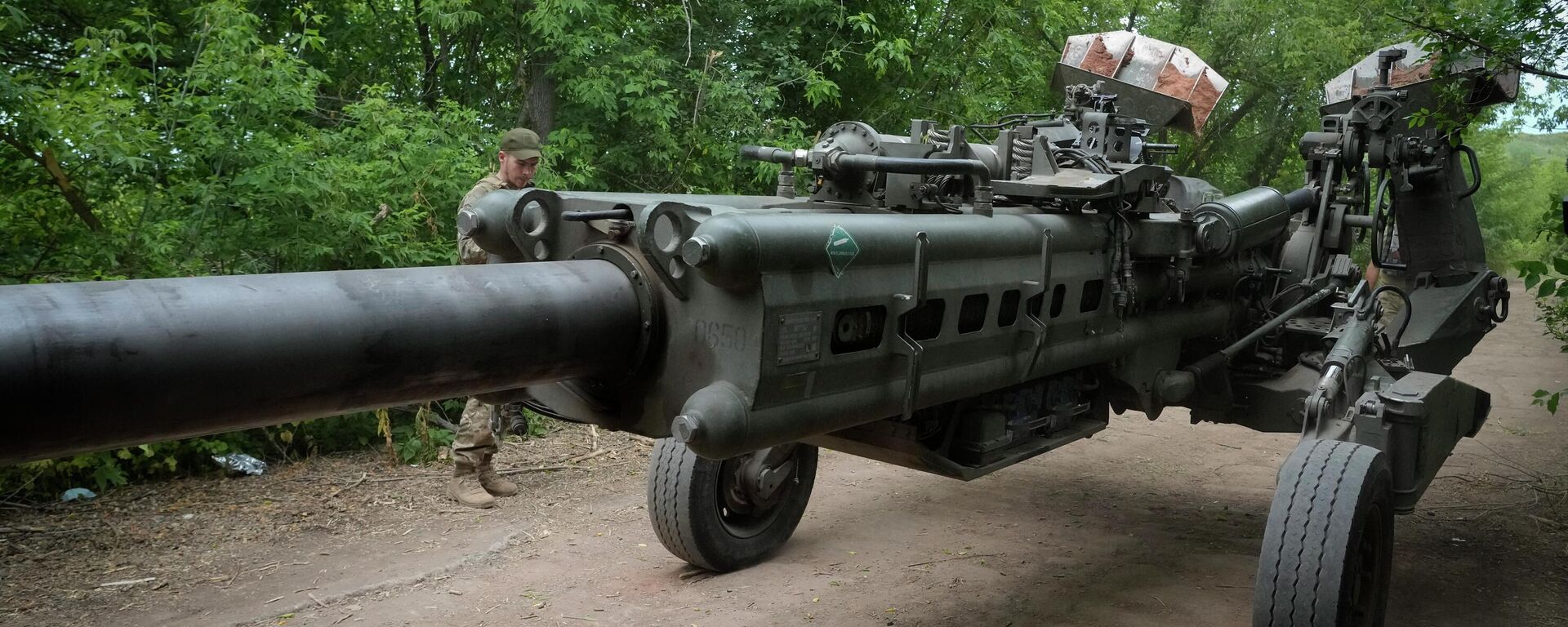
26 November 2022, 06:05 GMT
Resupply & Maintenance Challenges
There are a myriad problems facing the western coalition
providing weapons support for Ukraine. Washington, albeit the self-appointed ringleader of this “assistance”, has but limited stocks of the kind of weapons the Ukrainians need, the media report said. Loath to divert critical weapons from regions such as Taiwan and Korea, and as stockpiles of costly air-defense missiles and
anti-tank Javelins sent to Ukraine fade, the US has reportedly been scrambling to find Soviet-era equipment and ammunition for Ukraine.
This refers to S-300 air defense missiles, T-72 tanks and Soviet-caliber artillery shells. The problem with shells is becoming particularly pressing as the Ukrainian side is using a staggering amount of ammunition, according to cited NATO officials.
Recalling how many artillery rounds were fired daily by NATO forces in Afghanistan, for example, Camille Grand, a defense expert at the European Council on Foreign Relations, was cited as saying that, “a day in Ukraine is a month or more in Afghanistan”.
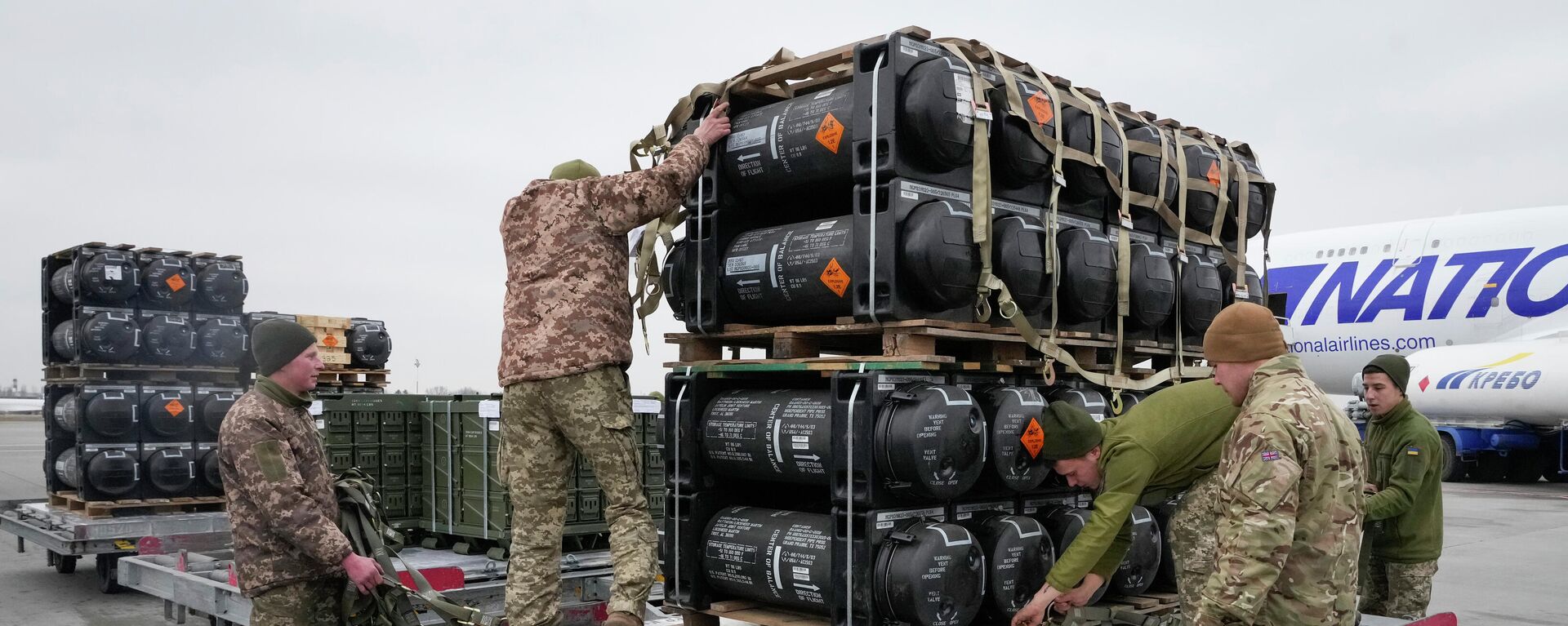
22 November 2022, 18:13 GMT
The United States produces only 15,000 artillery rounds each month, stated the sources, pointing out that western defense industries were being warned to get set for much longer-term contracts. Furthermore, there is ostensibly chatter about employing more shifts of workers and sprucing up older factory lines. Ammunition purchases from countries such as South Korea are also allegedly being looked at to “backfill” stocks hollowed out because of the Ukraine conflict.
NATO is even believed to be mulling investing in some old factories located in Slovakia, Bulgaria and the Czech Republic to launch the production of Soviet-caliber 152mm and 122mm shells for Ukraine, as the latter still relies to a great degree on artillery armory dating back to the Soviet-era. Furthermore, NATO countries have delivered advanced western artillery to Ukraine that utilizes the alliance’s standard 155mm shells. But as other NATO countries frequently make the shells differently, these systems are often incompatible.
The US stockpiles of 155mm artillery rounds had purportedly been dwindling as of September, with the numbers of guided rockets, rocket launchers, howitzers, Javelins and Stingers also limited.
An earlier report had stated that maintenance of the armaments was becoming a problem as no less than a third of the estimated 350 western-made howitzers supplied to Kiev were out of action at a given moment because of
wear and tear.
Export controls were another hurdle, the report highlighted, as some of the countries have legal restrictions on selling guns and ammunition to a country intending to deliver them to another one which is engaged in a conflict.
Describing the plethora of diverse systems that the western countries have been channeling into Ukraine, one alliance official wryly called it “NATO’s petting zoo”, in reference to the animal names used for weapons, such as the German Gepard ('Cheetah') 35mm self-propelled anti-aircraft gun mechanism, or the French Crotale (‘Rattlesnake’) air defense system. The “mixed bag”, as the source put it, makes both resupply and maintenance a challenging business. The alliance has failed to work on creating weapons that could be used interchangeably by NATO countries, added insiders.
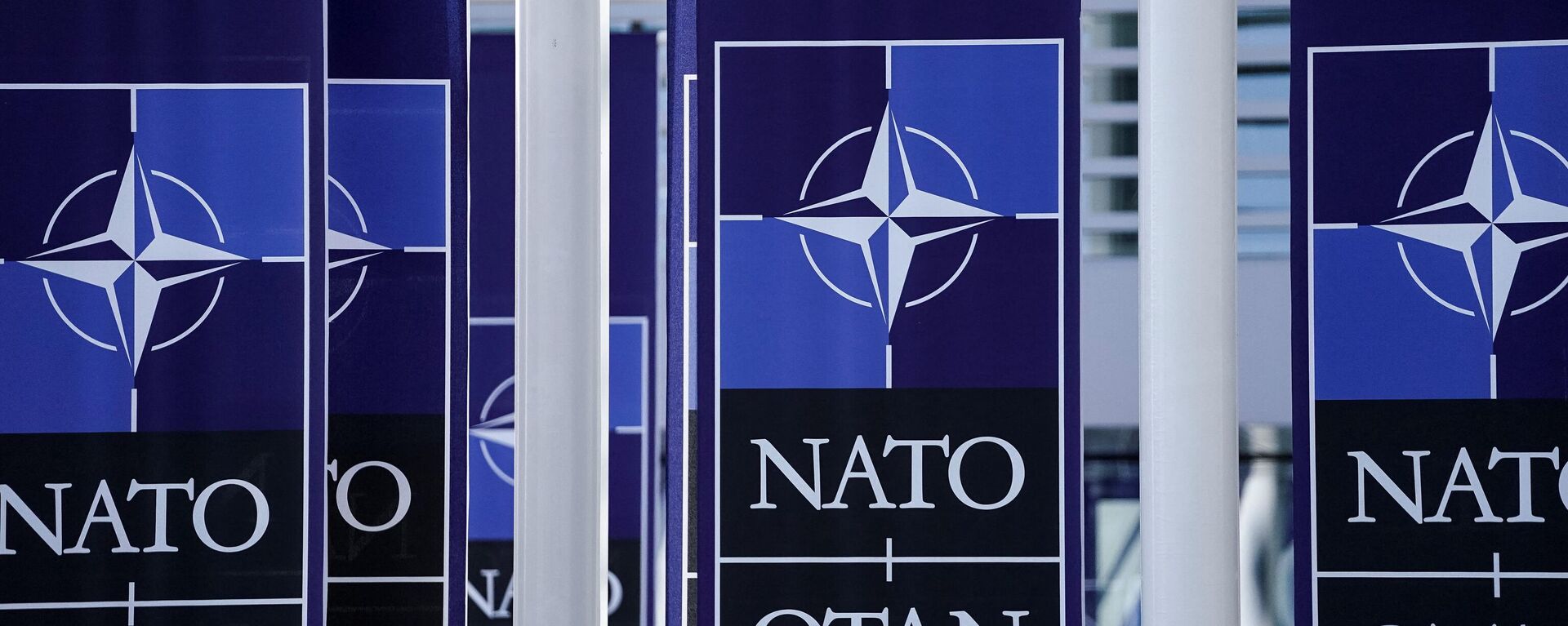
20 November 2022, 13:01 GMT
Overall, NATO countries have provided an estimated $40Bln of weaponry to Ukraine, the report added, almost equal to France’s entire annual defense budget, for example. Incidentally, Paris is cited as being reluctant to provide more to Ukraine after giving it about 20 percent of all its existing artillery in the form of 18 modern Caesar howitzers.
And yet, NATO’s secretary-general, Jens Stoltenberg, has been openly haranguing reluctant alliance members, reminding them that despite the bloc’s guidelines requiring members to maintain stockpiles, their depletion is no excuse to limit arms exports to Ukraine.
Russia began its special military operation on 24 February, responding to calls for help from the breakaway people's republics of Donetsk and Lugansk amid intensified aggression from the Kiev regime. Western countries responded by imposing sweeping sanctions against Moscow and ramping up their military support for Kiev. Moscow has consistently pointed out that assisting Kiev is only drawing out the conflict, and could cause further conflagration as NATO risks being
drawn fully into the conflict. Furthermore, there have been reports of US weaponry bound for Ukraine often “vanishing”, only to resurface on
the black market.

11 October 2022, 15:41 GMT
